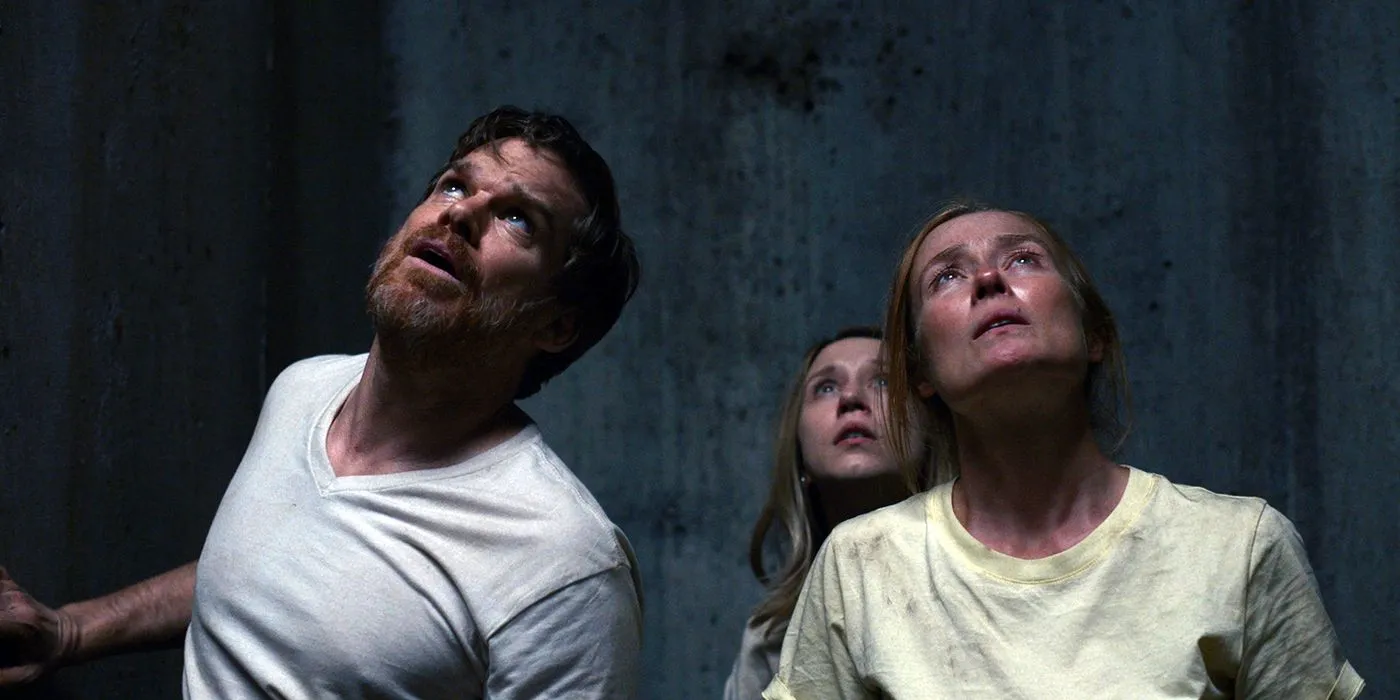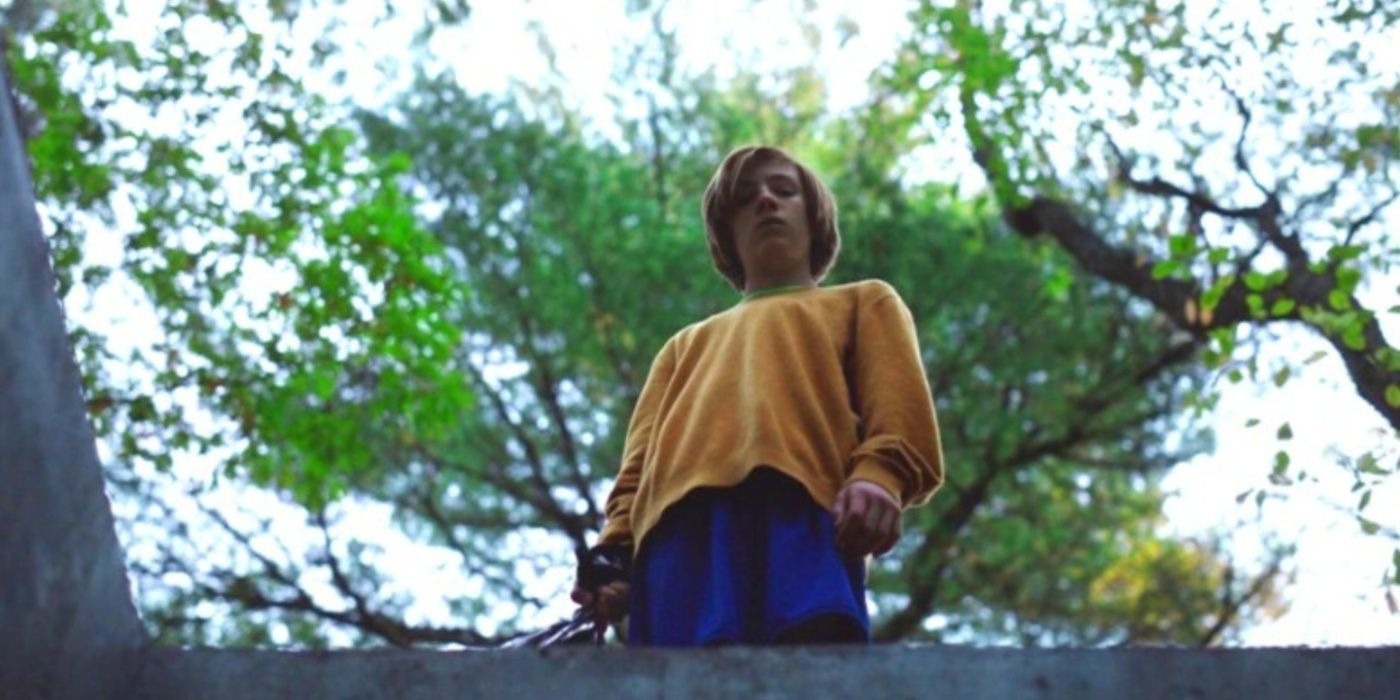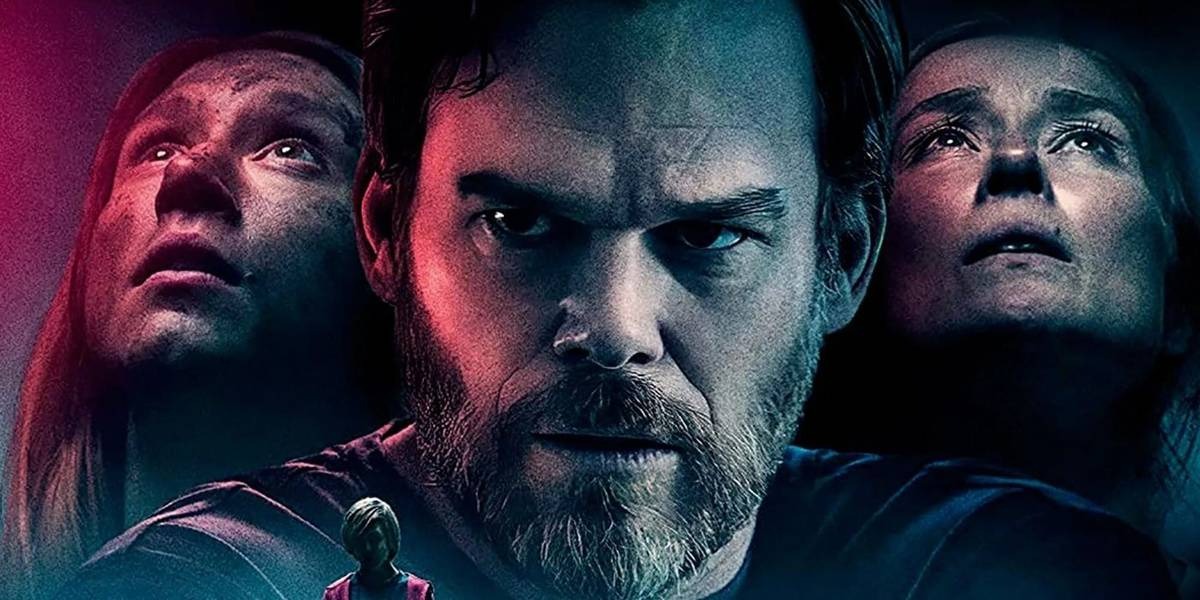Pascual Sisto’s film John and the Hole draws attention with its disturbing interpretation of wealth, maturity, and human wickedness. Rather than being a typical coming-of-age story, the film blends dark psychological elements with a symbolic title that leaves nothing to the imagination.
It follows a 13-year-old boy named John (played by Charlie Shotwell), the youngest in the well-to-do Shay household, who stumbles upon a large, empty underground structure hidden in the woods near their home. The presence of this literal “hole” ties directly into the movie’s core message.

The cast features Michael C. Hall, taking up the role of Brad, John’s father, while Jennifer Ehle acts as Anna, the mother, and Taissa Farmiga portrays Laurie, John’s older sister. Upon discovering the deep pit, John, who appears detached and emotionally indifferent, decides to drug each member of his family and drop them into it.
He carries out this bizarre act simply to enjoy life independently, free from parental restrictions. Though the story includes typical elements of teenage transition, John and the Hole also acts as a psychological study questioning how someone already blessed with comfort and luxury could still crave more.
The Shays’ Unwillingness To Punish John Is A Symptom Of The Family’s Issues
John Never Receives Any Comeuppance For His Actions
As the movie reaches its end, John’s family finds themselves physically weak and mentally strained from hunger and the psychological shock of their imprisonment. Without warning, John throws down a ladder, giving them a way to climb out.
For a boy who seemed cold enough to leave his family in a hole and carry on like nothing happened, this decision feels confusing—he lets them go just when it looked like he might watch them suffer to the end.
They eventually climb out and return to the surface, where they meet a strange sight—John pretending to be unconscious in the pool. Brad, his father, blocks out everything they’ve endured and immediately dives into the water to pull his son out.
What follows is an eerie dinner scene where the whole family sits in silence, closely mirroring how the movie opened. The message from this scene is clear: no punishment is handed out for John’s disturbing behaviour.
This disturbing outcome reflects a real-life issue where wealth can protect people from the regular consequences others would face.
The term “affluenza” became widely known after a 2013 case involving a privileged Texas teenager who caused the deaths of four people in a drunk-driving incident but walked free with only probation (via Forbes).
Since then, the term has been linked to the idea that wealthy individuals—and their children—tend to escape the type of accountability most people are forced to face. It becomes clear that John is not the only one displaying moral failure.
The rest of the Shay family also appears deeply flawed, allowing a toxic environment to thrive without ever trying to fix it. Despite drugging his parents and sister and leaving them in a pit underground, John avoids every form of punishment in the end.
His parents don’t scold him. He places their lives in danger, but no action is taken against him. The rot isn’t limited to John alone; his entire family carries the same dysfunction, and they have done nothing to address it.
John And The Hole Is A Fairy Tale
The Plot Of The Film Is Nested In A Fable Told From A Mother To Her Daughter
One of the unusual features of John and the Hole is its side story, which follows a girl named Lily (Samantha LeBretton), as her mother, Gloria (Georgia Lyman), tells her a bedtime story.
Although this subplot does not visibly connect to the main events involving John and his family, about thirty minutes into the film, Gloria enters Lily’s room and begins telling a story that includes “the hole.” Right then, a title card appears bearing the film’s name.
The film suggests that John’s story is actually part of a fairy tale Gloria narrates to her daughter, who has refused to come out of her room. Gloria’s storytelling acts as a life lesson for Lily, who is on the verge of being forced into adult life.
By the time the film reaches its final moments, Gloria informs Lily that she is leaving her behind and has set aside enough funds for her to survive on her own for a year. She makes it clear that Lily will be responsible for herself after that. This moment merges the two storylines.
While John risked the lives of his loved ones because he was obsessed with growing up quickly, Lily is being pushed into adulthood without any choice. Using John’s story as a warning, Gloria tries to prepare Lily for the tough world ahead. She believes pampering Lily too much will make her weak.
Yet, this extreme approach to parenting is just as flawed as the one shown by the Shay family. The fairy-tale framing gives clarity to some of the movie’s odd parts, like how the kidnapping plays out, how the police are so easily dismissed, and why everything seems to reset by the end.
The Real Meaning Of John And The Hole’s Ending
John And Lily Are Both Confronted With The Volatile Nature Of Growing Up
Both John’s main storyline and Lily’s background scenes highlight the dangers tied to growing up, showing what can go wrong when a child is either overprotected or left to fend for themselves.
Whether a child is raised in wealth, poverty, by a single mother, or within a traditional household, the journey into adulthood can carry serious risks. The film serves not only as a lesson for Lily but also for viewers, stressing that without proper support and guidance, children might face harmful outcomes as they try to mature.
“John and the Hole carries certain strengths within it. Even as Sisto’s first attempt at a full-length film, his strong sense of visual storytelling stands out. Many shots take bold directions, changing ordinary scenes into ones that feel quietly disturbing.” – Sarah Bea Milner, writing for Screen Rant
How The John And The Hole Ending Was Received

Most Critics & Audiences Were Bewildered By The End
Reactions to John and the Hole were mixed, with critics showing limited approval, as seen from its 60% fresh rating on Rotten Tomatoes. General viewers were harsher, leaving the film with a 27% rotten score. Many found the ending puzzling and claimed it failed to tie the story together.
Some of the better reviews still complained that the conclusion lacked “insight.” Critics, however, were more open-minded, and a few praised the message hidden in the film’s final scenes.
A.A. Dowd from AV Club reflected on the ending, stating that once Sisto and screenwriter Giacobone introduce a storytelling shift involving Anna’s conversation with John, the film becomes a commentary on how difficult it is to truly become an adult, whether the process happens slowly or all at once.
“We’re all just kids playing at adulthood,” he remarked. Peter Debruge of Variety also focused on how the ending ties everything together. “There’s a deliberate and controlled design to the film,” he said, describing it as something that would attract viewers who appreciate unsettling stories and can spot the careful direction behind it.
He went on to ask: now that this idea has been introduced through the film, what’s stopping a child somewhere from trying something similar?
Still, others didn’t respond as positively. Brian Tallerico from RogerEbert.com dismissed the movie, calling it “an experiment in blank affect and fractured domesticity” and saying the disappointing ending shows the film lacked any real purpose.
While some took something away from the message in John and the Hole, others felt disconnected and were left unconvinced.



